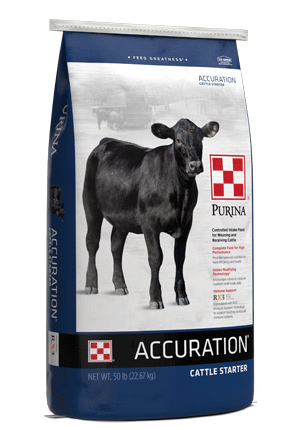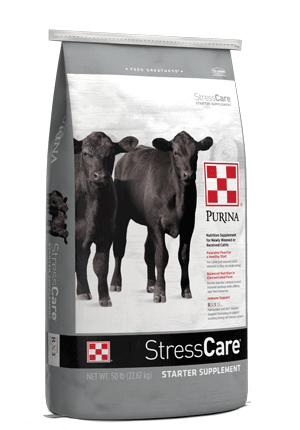
Overcoming Calf Health Hurdles
Management : Cow & Calf
Management : Weaned Calf
Management : Grower & Finisher

The cattle industry has a lot to celebrate, but it’s time to tackle the next challenge: calf health.
Getting calves from the farm to the packer with fewer instances of Bovine Respiratory Disease means more profit along the entire beef production chain. The cattle industry must work together to find innovative solutions, since changing consumer demands have already translated into impactful Veterinary Feed Directive regulations.
Dr. Alfredo DiCostanzo is a University of Minnesota professor, W. Mark Hilton, DVM, is a senior technical consultant at Elanco Animal Health and Zack Dombek, DVM, is Purina Animal Nutrition’s veterinary services manager.
The three cattle industry influencers discuss challenges and opportunities surrounding calf health:
W. Mark Hilton: Sick calves should be rare; they cost producers time and money. It’s possible to achieve zero sickness in calves; I know because I’ve worked with herds that have achieved it.
Zack Dombek: Veterinary Feed Directive regulations have caused the cattle industry to rethink prevention and treatment options. Consumer pressure that spurred the Veterinary Feed Directive will likely grow and impact treatment options further.
W. Mark Hilton: Producers with high calf health standards provide cows with nutrition to support their developing fetus and produce colostrum. Research shows if a calf nurses enough colostrum, it’s three times less likely to have Bovine Respiratory Disease in the feedlot nine months later. You also want to create the best environment and the Sandhills Calving System is a great way to ensure a clean birthing area.
Zack Dombek: Proper nutrition is key to a well-functioning immune system. Calves need to have a strong immune system able to mount an immune response to vaccinations and fight off illnesses, like Bovine Respiratory Disease.
W. Mark Hilton: The most important thing producers can do to promote calf health after weaning calves is preconditioning them for at least 45 days before selling. Next important is to administer comprehensive calf vaccines, specifically a modified-live vaccine to help prevent illness like Bovine Respiratory Disease.
Zack Dombek: Proper handling and transport after weaning calves can reduce sickness1. When weaning calves, get them eating sooner with a palatable feed. The sooner they eat, the less likely they are to get sick.
W. Mark Hilton: If every producer initiated a 15-minute brainstorming session at their local or state Cattlemen’s association on consumer demand and future regulations, some great ideas would surface. With more ideas and innovations, we can get ahead of changing consumer preferences.
Zack Dombek: One heavily targeted area is metaphylaxis antibiotic use upon feedlot arrival. Thanks to emerging technologies, we can screen feeder calves at feedlot arrival and selectively treat high-risk feeder calves for things like Bovine Respiratory Disease.
Join the fight against Bovine Respiratory Disease. See if your calf nutrition program stacks up with a Proof Pays trial.
1 Beef Quality Assurance. 2018. BQA Transportation. Accessed March 5, 2019. https://www.bqa.org/programs/bqa-transportation
Getting calves from the farm to the packer with fewer instances of Bovine Respiratory Disease means more profit along the entire beef production chain. The cattle industry must work together to find innovative solutions, since changing consumer demands have already translated into impactful Veterinary Feed Directive regulations.
Dr. Alfredo DiCostanzo is a University of Minnesota professor, W. Mark Hilton, DVM, is a senior technical consultant at Elanco Animal Health and Zack Dombek, DVM, is Purina Animal Nutrition’s veterinary services manager.
The three cattle industry influencers discuss challenges and opportunities surrounding calf health:
Why is calf health such an important topic today?
Alfredo DiCostanzo: Today’s antibiotics are more powerful, preventative calf vaccines are better, and yet we're still seeing more instances of Bovine Respiratory Disease. And, more instances of Bovine Respiratory Disease have increased morbidity and mortality rates in the feedlot. Why? There’s no comprehensive answer. However, feedlot size has grown faster than cow/calf operation size. Feedlot managers are often forced to fill one pen with feeder calves from several sources, caring for and weaning calves differently. Some feeder calves might’ve had a bad start due to drought; others maybe didn’t receive comprehensive calf vaccines. It only takes one batch of sick feeder calves to infect the masses.W. Mark Hilton: Sick calves should be rare; they cost producers time and money. It’s possible to achieve zero sickness in calves; I know because I’ve worked with herds that have achieved it.
Zack Dombek: Veterinary Feed Directive regulations have caused the cattle industry to rethink prevention and treatment options. Consumer pressure that spurred the Veterinary Feed Directive will likely grow and impact treatment options further.
What can producers do to promote calf health before weaning calves?
Alfredo DiCostanzo: The most impactful thing a cow/calf producer can do? Keep the best environment possible for newborn calves, so they’re not exposed to excessive pathogens. Calf vaccines are another important preventative care tool, but only work if they’re administered correctly and administered to an animal that can mount an immune response. Creep feeding can also help calves get ahead, especially during drought or excess rain.W. Mark Hilton: Producers with high calf health standards provide cows with nutrition to support their developing fetus and produce colostrum. Research shows if a calf nurses enough colostrum, it’s three times less likely to have Bovine Respiratory Disease in the feedlot nine months later. You also want to create the best environment and the Sandhills Calving System is a great way to ensure a clean birthing area.
Zack Dombek: Proper nutrition is key to a well-functioning immune system. Calves need to have a strong immune system able to mount an immune response to vaccinations and fight off illnesses, like Bovine Respiratory Disease.
What can producers do to promote calf health after weaning calves?
Alfredo DiCostanzo: Vaccinations are a great tool in the feedlot, however cattle feeders must astutely manage poorly sourced feeder calves that look ragged and aren’t uniform in age or size. It might not make sense to vaccinate feeder calves if they’re stressed, can’t eat, have limited access to water or have poor troughing conditions.W. Mark Hilton: The most important thing producers can do to promote calf health after weaning calves is preconditioning them for at least 45 days before selling. Next important is to administer comprehensive calf vaccines, specifically a modified-live vaccine to help prevent illness like Bovine Respiratory Disease.
Zack Dombek: Proper handling and transport after weaning calves can reduce sickness1. When weaning calves, get them eating sooner with a palatable feed. The sooner they eat, the less likely they are to get sick.
How can producers stay ahead of changing consumer demands?
Alfredo DiCostanzo: We need to be proactive and use antibiotics judiciously because consumers want to see antibiotics more regulated. Veterinary Feed Directive regulations for oral antibiotics were step one, but we can do more. For example, create a low-stress plan with your vet for high-risk feeder calves. Consider targeted feed-through medications for calves that need it versus giving a blanket antibiotic treatment.W. Mark Hilton: If every producer initiated a 15-minute brainstorming session at their local or state Cattlemen’s association on consumer demand and future regulations, some great ideas would surface. With more ideas and innovations, we can get ahead of changing consumer preferences.
Zack Dombek: One heavily targeted area is metaphylaxis antibiotic use upon feedlot arrival. Thanks to emerging technologies, we can screen feeder calves at feedlot arrival and selectively treat high-risk feeder calves for things like Bovine Respiratory Disease.
Join the fight against Bovine Respiratory Disease. See if your calf nutrition program stacks up with a Proof Pays trial.
1 Beef Quality Assurance. 2018. BQA Transportation. Accessed March 5, 2019. https://www.bqa.org/programs/bqa-transportation


